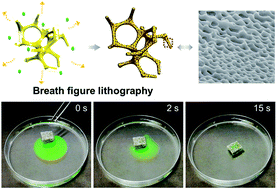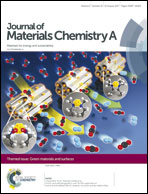Breath figure lithography for the construction of a hierarchical structure in sponges and their applications to oil/water separation†
Abstract
Super absorbent materials that are capable of separating oil-water mixtures have received a great deal of interest, due to their promising applications in the treatment of oil spillages and industrial discharge of oily wastewater, both of which lead to severe environmental pollution. In this paper, we describe a novel strategy for the fabrication of superhydrophobic polyurethane (PU) sponges by tailoring their structure and composition. Breath figure lithography, coupled with alkylated SiO2 nanoparticles, was used for the generation of porous nanocomposites that could be immobilised onto the PU scaffolds. The obtained PU sponges show a well-defined porous texture in the macro-, micro-, and nano-scales, and could selectively adsorb oils and/or organic solvents from water. In addition, we show that the engineered PU sponges can be magnetically driven to specific oil pollution locations by introducing magnetic nanoparticles into the PU sponges. Our approach not only demonstrates an effective method to separate oil-water mixtures but also represents an easy way to collect the separation products.

- This article is part of the themed collection: Green Materials and Surfaces


 Please wait while we load your content...
Please wait while we load your content...